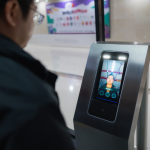According to entrepreneur Sidnei Piva de Jesus, road safety has become an increasingly discussed topic, especially with the rise in vehicle numbers and the concern for preserving life. With advancements in automotive technology, various solutions have emerged that go far beyond seat belts. In this article, we will explore how these technologies work and why they are so important for drivers and passengers.
How Do ABS Brakes Help Prevent Accidents?
The Anti-lock Braking System (ABS) is one of the most well-known and effective features in accident prevention, as highlighted by Sidnei Piva de Jesus. It prevents the wheels from locking during sudden braking, maintaining vehicle control even in emergency situations. This is particularly useful on wet or slippery roads, where the risk of skidding is higher.

Moreover, ABS reduces braking distance in many scenarios, which can be crucial for avoiding collisions. Many drivers may not realize that this technology operates in fractions of a second, making automatic adjustments to brake pressure. As a result, it has been mandatory in new vehicles in Brazil since 2014. This requirement has already saved thousands of lives on roads and in cities.
Learn What Stability Control Is and How It Works
According to entrepreneur Sidnei Piva de Jesus, Electronic Stability Control (ESC), also known as ESP, is a technology that helps keep the car on the correct path. It activates when the system detects that the vehicle is losing control, such as during sharp turns or sudden direction changes. When this risk is detected, ESC reduces engine power and applies braking force to specific wheels, helping the driver regain control.
@sidneipivadejesusDicas Práticas para Armazenar Vinhos com Sidnei Piva de Jesus! SidneiPivaDeJesus SidneiPiva SidneiItapemirim PivaItapemirim QuemÉSidneiPivaDeJesus #OQueAconteceuComSidneiPivaDeJesus
This feature is particularly effective in preventing rollovers and skids, especially in taller vehicles like SUVs. Therefore, even in situations where the driver makes a mistake, the system automatically intervenes to correct the steering. In many countries, ESC is already mandatory, and in Brazil, this requirement will apply to all cars sold starting in 2024.
What Technologies Protect Occupants in the Event of a Collision?
Finally, in addition to systems that prevent accidents, there are technologies designed to protect those inside the car when impact is unavoidable, as noted by Sidnei Piva de Jesus. Here are some of the most common and effective ones:
- Airbags: Inflate rapidly at the moment of collision to protect the head, chest, and other body parts of the occupants.
- Pre-tensioner Seatbelts: Instantly retract the seatbelt to keep the body securely fastened to the seat, preventing sudden movements.
- Crumple Zones: Designed to absorb impact, minimizing damage to the passenger compartment.
- Active Headrests: Automatically move forward in the event of a rear collision, reducing the risk of neck injuries.
These items work together to reduce the severity of injuries in accidents. When combined with collision-avoidance systems, they create a comprehensive safety network that can save lives. It is also important to remember that all these devices must be maintained in good condition to ensure their proper functioning.
Technology and Attention Go Hand in Hand
In conclusion, vehicle safety technologies are significant allies in protecting drivers and passengers. With this in mind, ABS brakes, stability control, and systems like airbags and modern seatbelts play a vital role in preventing accidents and reducing their impact. However, no technology can replace defensive driving and respect for traffic laws. Thus, with common sense and well-equipped vehicles, the chances of returning home safely increase significantly.
Author: Halabeth Gallavan







